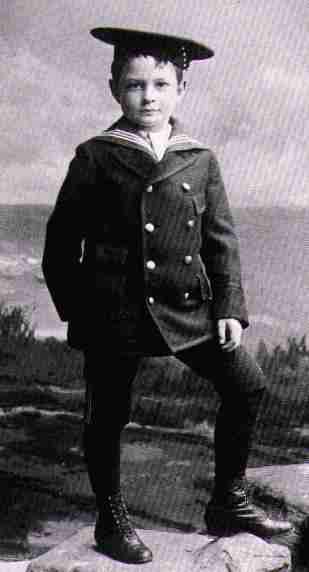
Figure 1.--This New York City boy wears a double-breasted reefer jacket a part of his sailor suit. |

|
The reefer jacket has quite a bit of history attached to it. The reefer jacket is essentially the same as a pea-coat. Officers wore a longer version know as the bridge coat. But the term reefer became more popular than pea cosats for boys' jackets. "Reef" is a sailing term and this is presumably how the jacket acquired its name. We have acquired some information on this important account and eventually hope to provide a more definitive account. While the reefer jacket and suit disappeared after World war I. The reefer coat has continued to be a popular style.
The original term seems to be pea coat which appears to be of Dutch origins. These jackets were also called reefer jackets owing to their naval origins. The nautical term "to reef" conotates reducing the area of the sail to catch the wind. Sailors wore heavy jackets when they had to go aloft to take in or let out the sails. It must have been a bitter cold experience in bad weather. While heavy, they were short so the sailors could better manuever in the rigging. At any rate the heavy jackets they wore became known as reefer jackets. Officers wore longer versions called bridge jackets. Over time the term reefer became mnore popular that pea coat. In connectio with boys wear during the late-19th and early-20th centuyry, the term reefer was almost always used.
Boys wearing sailor suits might during
the winter wear reefer jackets. Sailor suits were worn both during the
summer and winter. During the winter a coat was required for the cold
weather. To complement the sailor suit, reefer jackets like those worn
by seamen were worn by the boys. A reefer coat is a short coat or jacket of thick cloth. They were double breasted with a double row of buttons. Unlike sailor suits,
the reefer coat were almost always blue, rarely white. This is
presumably because they were worn during the winter when boys were
wearing blue sailor suits. Reefer jackets were widely worn in Britain, Europe, and America. The styles seem rather uniform. Sailor suits varied somewhat in style among
countries. The reefer jackets, however, appear relatively similar
in different countries and over time. There were some differences in the design of reefer jackets. Elegant reefer jackets might have velvet at the collar. There were also differences in the number and arrangement of pockets. Lengths also varied. Some might come down to knee level, but most were much shorter. Reefer coats were primarily a boys' style, but we noted them being worn by girls as well. A good example is Molly and Betty Blewitt in England about 1920.
Today we generally think of the reefer jacket or coat as a stand alone overcoat to be worn in cold weather. Boys in the late 19th and early 20th century, however, wore reefer suits. The reefer javket was worn as the upperpart of a sailor suit instead of a middy blouse. As such it was a sailoor suit for winter wear. Boys would wear the jacket at home or at school and not take it off like a coat. A reefer suit would be a two piece outfit consisting of the jacket and matching pants--usually kneepants. HBC is not sure about the age of boys who wore reffer suits. One 1897 Sears catalog offered them for boys from age 3 to 8 years.
HBC at this time has only limited information on the chronology of reefer suits. The original sailor suit worn by the future Edeard VII in the 1940s was a white middly blouse and and bellbottom trousers. We are not sure when boy first began weraring reefer jackets. We believed that they became popular in the 1880s and were worn through the 1910s. This is, however, only an estimate and needs further conformation. We are less sure about the chrnology of reefer jackets as coats.
The reefer jacket was probably the inspiration for the modern blazer. The captain of the HMS Blazer, faced with a visit from Queen Victoria, decided to smarten up his crew. He outditted them in short blue sege double breasted jackets--showing the influence of the reefer jacket. Queen Victoria was very impressed. The jackets worn by the Blazer's crew was copied by other captains and inspired the modern blazer. Some historians, however, discredit this account.
The reefer jacket like the sailor suit was worn by boys throughout Europe and America. While sailors suits varied simewhat from country to cvountry, HBC has noted much less variance in the rather basic styles of reefer jackets. Reefer jackets were such serviceable garments that they are still worn today.
Navigate the Historic Boys' Clothing Web Site:
[Introduction]
[Activities]
[Biographies]
[Chronology]
[Clothing styles]
[Countries]
[Bibliographies]
[Contributions]
[FAQs]
[Glossaries]
[Images]
[Links]
[Registration]
[Tools]
[Boys' Clothing Home]
Navigate the Historic Boys' Clothing Web chronological pages:
[The 1800s]
[The 1810s]
[The 1820s]
[The 1830s]
[The 1840s]
[The 1850s]
[The 1860s]
[The 1870s]
[The 1880s]
[The 1890s]
[The 1900s]
[The 1910s]
[The 1920s]
Navigate the Historic Boys' Clothing Web saiolor pages:
[Return to the Main sailor suit page]
[Return to the Main cold weather jacket page]
[Sailor suits]
[Sailor dresses]
[Other sailor styles]
[Sailor hats]
[The Royals]
[Ring bearer/page costumes]
